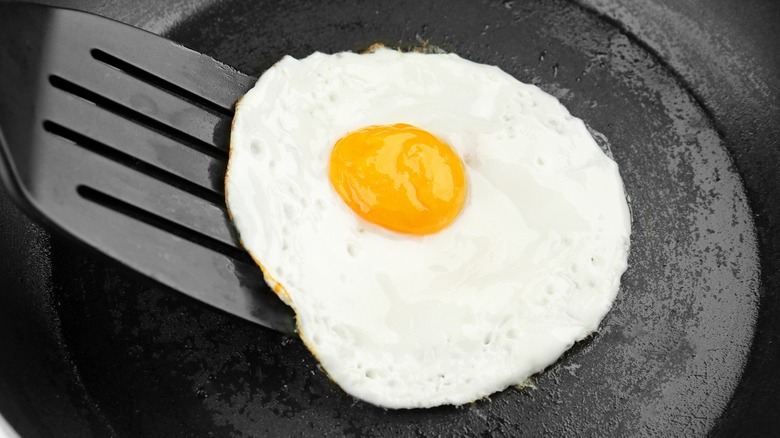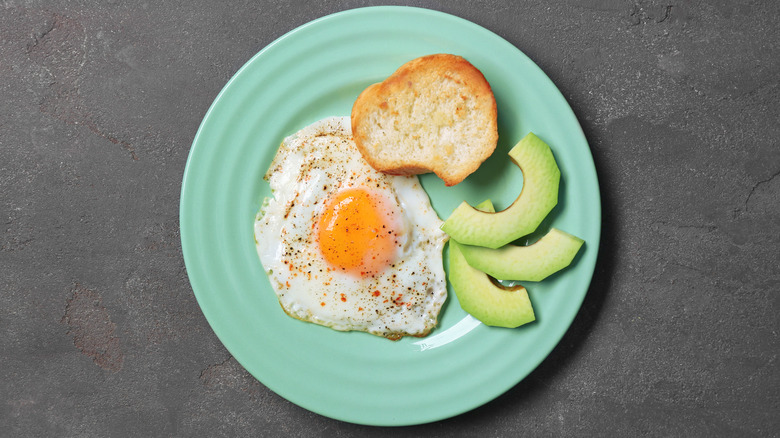How To Flip Over-Easy Eggs For Flawless Results Every Time
It's easy enough to scramble eggs. However, when you're looking to dish up eggs in a style like over-easy where some portion is cooked while the yolk remains runny, things can get a whole lot more complicated. Flip an over-easy egg at the wrong time and you'll be left with a mess that you may as well just give up on. If you wait too long, though, the yolk will be cooked too much and you'll end up with over-hard eggs instead.
There's an easy trick to tell when the best time to flip your over-easy eggs is, and it doesn't require any additional kitchen gear. Put the timer aside — so much depends on exactly how hot your stovetop gets or how well your pan retains heat. So, not every over-easy egg will require exactly the same amount of cooking time. It's better to just use your eyes instead.
For a flawless over-easy egg, you want the egg whites to be cooked and the yolk to still be soft enough to ooze when you cut into it. So, keep an eye on your eggs and wait until you see that almost all of the whites have transformed from the raw, clear stage to opaque and white in appearance. There should be just a small portion of unset egg whites right around the yolk. This will give you a solid base that can easily be flipped without falling apart.
A few more tips for flawless over easy eggs
While mostly-set egg whites will give you a more stable base to flip, you still do need to be aware of how you're positioning the egg yolk in relation to your spatula. Since the yolk will still be almost entirely runny, it can easily topple right off the top of your egg white base if you make a wrong move or position it towards the edge of your spatula. So, try your best to ensure your yolk is right near the center of your spatula or flipping tool of choice, allowing you to flip it and keep everything intact.
You also want to ensure you're not running into difficulties because portions of your eggs are sticking to your pan, so be generous with the butter. Don't disturb your egg for a few seconds after you initially flip it, as you want to let a bit of a seal or crust form over the yolk. Alton Brown suggests slowly counting to 10 after flipping your egg in order to get the perfect over-easy yolk consistency.
Finally, unless you're a seasoned pro, stick to flipping one egg at a time. If your egg whites happen to have merged in the cooking process, gently cut them with the edge of your spatula — trying to wrangle two jiggly yolks onto your spatula at once is a recipe for disaster.

